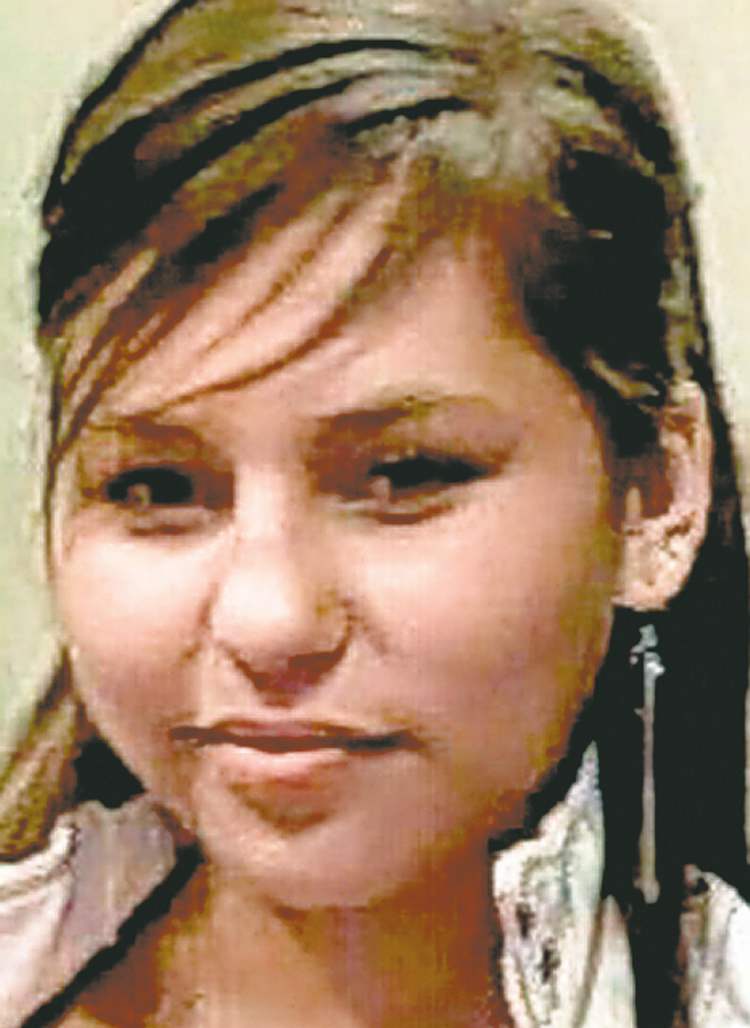Lamb case an injustice then, an injustice now
Advertisement
Read this article for free:
or
Already have an account? Log in here »
To continue reading, please subscribe:
Monthly Digital Subscription
$0 for the first 4 weeks*
- Enjoy unlimited reading on winnipegfreepress.com
- Read the E-Edition, our digital replica newspaper
- Access News Break, our award-winning app
- Play interactive puzzles
*No charge for 4 weeks then price increases to the regular rate of $19.00 plus GST every four weeks. Offer available to new and qualified returning subscribers only. Cancel any time.
Monthly Digital Subscription
$4.75/week*
- Enjoy unlimited reading on winnipegfreepress.com
- Read the E-Edition, our digital replica newspaper
- Access News Break, our award-winning app
- Play interactive puzzles
*Billed as $19 plus GST every four weeks. Cancel any time.
To continue reading, please subscribe:
Add Free Press access to your Brandon Sun subscription for only an additional
$1 for the first 4 weeks*
*Your next subscription payment will increase by $1.00 and you will be charged $16.99 plus GST for four weeks. After four weeks, your payment will increase to $23.99 plus GST every four weeks.
Read unlimited articles for free today:
or
Already have an account? Log in here »
Minutes after convicted killer Shawn Lamb agreed to a plea deal on two counts of manslaughter in the deaths of Lorna Blacksmith and Carolyn Sinclair, the families of the victims knew an injustice had occurred.
“My sister is never going to return,” Amanda Sinclair said in November 2013 after Lamb was sentenced to 20 years in prison. “Lorna is never going to return… But you know, he gets three meals a day, you know, for how many years? And they’re asking for less?”
Then, the sister of Sinclair pointed out the real problem: “In nine years, he’s eligible for parole… Where’s the justice in this? There’s no justice system for my family. I’m never going to get her back.”
These words are prophetic as the now-66-year-old Lamb was granted statutory release this week after serving the mandatory two-thirds of his sentence.
Meanwhile, his two victims — Blacksmith, who was 18 and Sinclair, who was 25 — were guilty of nothing more than trusting the wrong person.
The reason Lamb served such little time after causing two horrific deaths — and perhaps a third in Tanya Nepinak, which he denied — is a combination of questionable police and judicial decisions, an unaccountable justice system, and a long history of systemic and unaddressed violence in Indigenous lives.
It is clear to anyone who looks at the case that Lamb — who, since 1979, was convicted of more than 100 crimes ranging from robbery to sexual assault to fraud — was a drug addict, chronic offender, and someone who preyed upon young and vulnerable Indigenous women.
This is a man who should have never been walking free, or, at very minimum, should have been in some sort of mental health facility.
The eerie similarities between the Lamb case and the case a decade later, against serial killer Jeremy Skibicki, cannot be overstated.
Both men had long criminal records. Drugs played a central role in both cases. Indigenous woman were killed in the men’s apartments and their remains were left for long periods of time before attempts were made to hide the crimes.
The difference, of course, is that no one is likely to see Skibicki on the streets ever again. He was found guilty of four counts of first-degree murder, admittedly helped by large amounts of evidence with history, circumstances, and public attention playing roles.
Lamb, on the other hand, received a plea deal because of a lack of forensic evidence, eyewitnesses, and a reliance on a confession made after police gave him $1,500 for a “canteen fund” at the Winnipeg Remand Centre. He was being treated as an informant, not a suspect at the time, but his statements still likely would have been ruled inadmissible in court.
The case may have been weak but this is as much related to suspicious, sloppy policing as anything else.
The fact is that Lamb was a brutal person with a long history of violence.
Confession or not, Lamb clearly expressed intent by inviting those women into what was undoubtedly going to be a dangerous — and likely deadly — situation.
I’ve personally witnessed individuals — and, particularly, Indigenous individuals — convicted and locked away forever for much, much less.
Simply put, offering Lamb a chance for a plea deal for two counts of manslaughter (in which the average sentence in Canada is 7.6 years) instead of second-degree murder (where the average sentence is 12.5 years) was a mistake.
It was a mistake worth an apology to the families of Blacksmith and Sinclair at minimum.
This isn’t where the Lamb case ends, though.
During his application, Lamb, who is a member of Aamjiwnaang First Nation, cited his history as a First Nations survivor of the ‘60s Scoop who experienced sexual and physical abuse at the hands of his adoptive family as an argument for his release.
The parole board agreed with him on Nov. 7, writing: “The Board has considered your (Indigenous Social History) in its decision… In the board’s view, given your assessed levels of risk and serious nature of offences, a period of residency is required as you transition back into the community to ensure you can apply your learned skills and manage any potential reintegration stressors.”
The problem is that no one from the parole board bothered to let anyone in the Indigenous community — and, in particular, the families of the victims — know about Lamb’s release.
So much for the “potential reintegration stressors.”
Now we all have to deal with this injustice. Again.
niigaaan.sinclair@freepress.mb.ca

Niigaan Sinclair is Anishinaabe and is a columnist at the Winnipeg Free Press.
Our newsroom depends on a growing audience of readers to power our journalism. If you are not a paid reader, please consider becoming a subscriber.
Our newsroom depends on its audience of readers to power our journalism. Thank you for your support.







